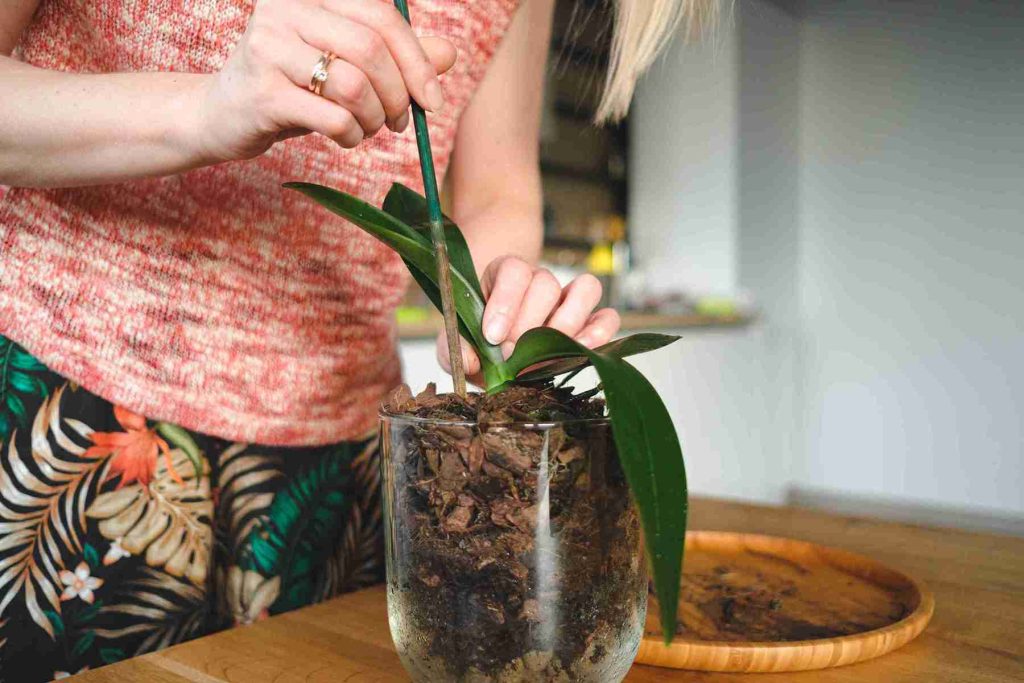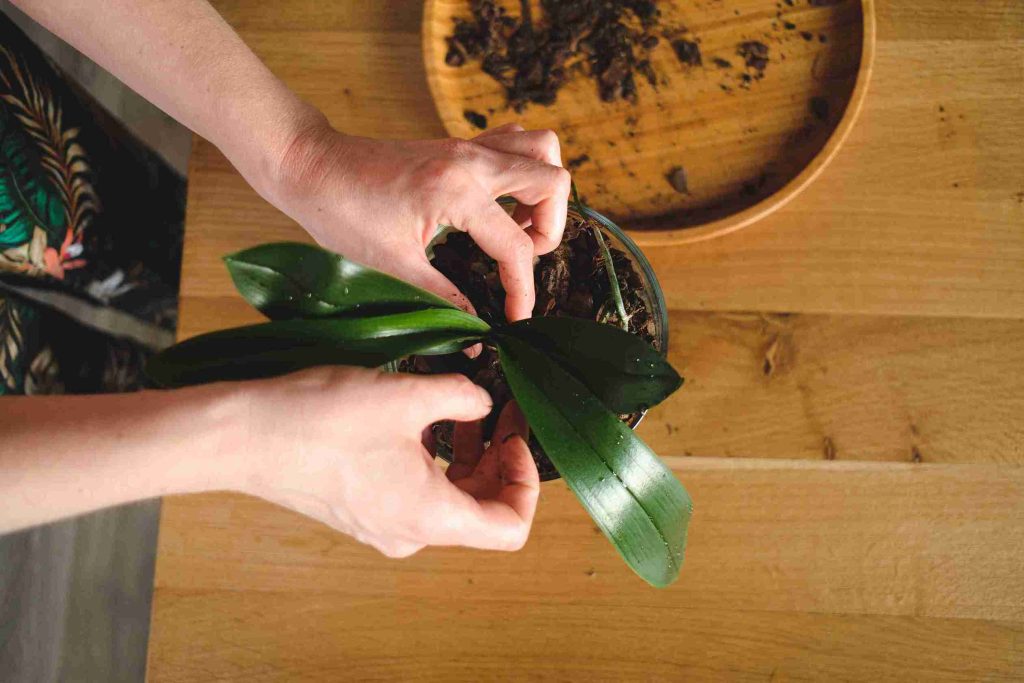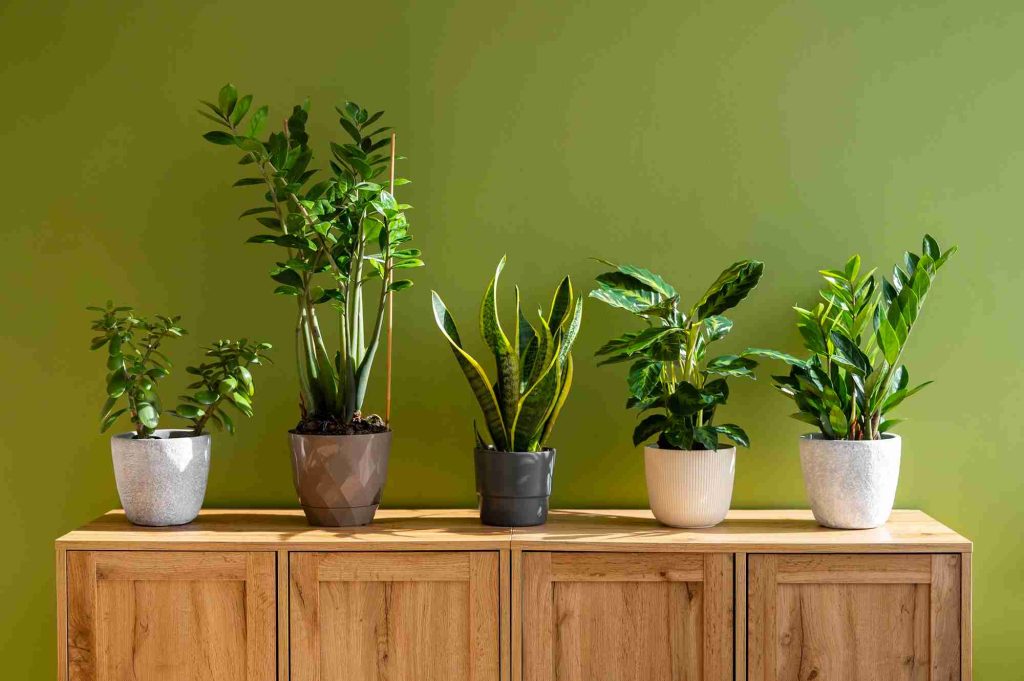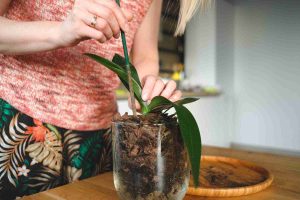
So, do indoor plant need drainage holes? Yes, they really do! Without drainage, extra water stays in the pot and makes the roots too wet. That causes problems like root rot, fungus, and even plant death. I lost a few lovely plants before I understood this.
When I first started keeping houseplants, I picked pretty pots without thinking about drainage holes. I thought they didn’t matter. But soon, my plants started to look weak. Leaves turned yellow, and roots began to rot. That’s when I learned the hard way how important drainage holes are.
Now, I always check the bottom of every pot. If there’s no hole, I either drill one or use it as a cover pot with a plastic nursery pot inside. This small change keeps my plants healthy and happy. In this article, I’ll share why drainage is a must and how to take care of indoor plants the right way!

How I Started With Indoor Plants
I still remember my first indoor plant. It was a tiny succulent. I put it in a pretty pot with no hole. I thought it looked neat and clean that way. But I didn’t know much about plant care then. After a few weeks, the leaves turned mushy. I had no clue what went wrong. I gave it water regularly, maybe too much. I later found out, water was stuck inside the pot. The roots started to rot because the water had no way out.
That’s when I learned about drainage holes. They help get rid of extra water. When roots sit in water, they can rot fast. Healthy roots need both air and space. Drainage holes help balance moisture and air. Since then, I always use pots with holes. I also check the water flow when I water them. If water doesn’t come out, I know something is wrong. This small step saved many of my plants.
Now, every time I get a new plant, I check the pot. I always ask myself, “Does this pot have a hole?” That one question changed everything for me and my plant babies.
Why Plant Need Drainage Holes So Much
Drainage holes are small, but they do a big job. I found this out after killing a few plants. At first, I thought watering more was good. But I learned too much water is deadly. Drainage holes stop water from sitting at the bottom. That standing water makes roots soft and weak.
When I used pots without holes, I saw mold growing. The soil stayed wet for days. My plant leaves turned yellow and dropped. I felt sad and confused. I didn’t want to lose more plants. So I read a lot online. Many people said the same thing—roots need to breathe. I never thought about that before.
I tried using pots with holes again. This time, my plants started to thrive. The soil dried out properly. No more root rot. No more smelly soil. I even touched the soil sometimes to check. It felt fresh and airy.
Having drainage holes also made watering easier. I didn’t have to guess how much water to give. The extra water just drained out. I saw my plants happier and healthier. That’s when I truly understood—drainage holes are life savers for indoor plants.
Mistake Using Fancy Pots Without Drainage Holes
I love cute pots. I used to buy them for their look. I once got a pink one shaped like a cat. It had no drainage hole. I thought, “This is perfect!” I put a small fern in it. For a few days, it looked fine.
But then the leaves started turning brown. The soil felt wet all the time. I got worried and took the plant out. The roots smelled bad and were brown. I cried a little. That pot killed my fern. It was all because it had no hole. I tried drilling a hole, but it cracked. I felt even worse.
After that, I learned a trick. I now use a plastic nursery pot with holes inside. Then I place it inside the fancy pot. That way, water drains out, and I keep the pretty look. I sometimes take out the plastic pot to water the plant in the sink. Then I let it drain fully before putting it back.
This trick saved me money and plants. I still get to use my pretty pots. But now I never put soil directly into a pot without holes. Lesson learned—cute doesn’t always mean safe for plants.
How Drainage Affects Root Health
I once had a peace lily with brown tips. I kept watering it, thinking it was dry. But I made it worse. The roots turned mushy and black. That’s when I learned about oxygen for roots.
Roots need both water and air. Without air, they drown. Drainage holes allow airflow in the soil. They help water move down and out. If water stays in one place, roots can’t breathe. I dug out the plant and saw a mess. The roots smelled like a dirty sponge. That made me feel so guilty.
I bought a new pot with good drainage. I also added some rocks at the bottom. Then I added fresh soil. I repotted my peace lily and watered it slowly. Water came out the hole below. That was a good sign.
After a few weeks, new green leaves came. The brown tips stopped. I felt proud. I knew I had helped the plant recover. Now I always check my plant roots during repotting. I make sure they’re firm, white, and healthy. Drainage holes help make that happen.
Healthy roots mean a happy plant. And drainage plays a huge role in that.
What Happened When I Overwatered
Overwatering was my biggest mistake. I wanted to show love by giving more water. But it was hurting my plants. I remember one cactus I overwatered. I thought cacti need water once a week. So I gave it a full cup every Sunday.
After a month, the base turned squishy. It leaned to the side. I didn’t know what was going on. I looked it up and found the cause—overwatering in a pot with no drainage.
I panicked and took it out. The roots were brown and soft. Some parts had mold. I cried again. I didn’t know I could kill a cactus so easily. I threw away the pot. Then I bought a terracotta pot with a hole. I also learned to use fast-draining soil.
Now I water my cactus only when the soil feels dry. I lift the pot to check its weight. If it feels light, I water it. If not, I wait. That small change saved all my future succulents.
Water is life, yes—but only when it doesn’t sit still. That’s why I say again and again, drainage holes matter.
The Role of Potting Mix and Drainage
I once used regular garden soil for an indoor plant. It stayed too wet and felt heavy. Even with a pot that had a hole, it didn’t drain well. That’s when I learned—soil and drainage go hand in hand.
Now I use special potting mix made for indoor plants. It feels light and fluffy. Water runs through it easily. I sometimes add perlite or sand to make it even better. I mix it myself.
A drainage hole won’t help much if the soil stays soggy. That’s a mistake I made early on. Even a well-draining pot needs the right soil. When I fixed my mix, my plants looked brighter. The roots grew stronger.
I tested this with two plants. One had garden soil, the other had potting mix. The one with potting mix looked better in just a week. That proved it to me.
Now I always buy good potting mix. I read labels carefully. Some mixes even say “fast-draining”—those are my favorite. Soil + pot = full drainage success. Never forget that combo.
How I Water My Plants With Drainage
Watering became easier once I used pots with holes. Before that, I was guessing. I didn’t know how much water was too much. But now, I have a system.
I take the plant to the sink or tub. I pour water until it comes out of the hole. I wait a few minutes for the extra water to drain. Then I put it back in its spot. That way, no water stays at the bottom.
Sometimes I use a tray under the pot. But I always empty it after watering. I never let my pots sit in water. I learned that the hard way. One time, I left water in the tray. The roots rotted fast.
Now I check trays every time. I use my finger to check if the top inch of soil is dry. If it is, I water. If not, I wait.
Drainage holes help me see if the plant had enough. I feel more confident now. I don’t second-guess my watering anymore. That small hole gives me big peace of mind.
Indoor Plants That Love Drainage

Some plants can’t live without good drainage. I learned this from trial and error. Succulents and cacti need very fast drainage. If their roots stay wet, they die quickly. I lost many before I got it right.
Even plants like pothos and snake plants prefer drainage. They don’t like soggy roots. My pothos started to droop in a pot without a hole. But once I moved it to a draining pot, it perked up.
I now match the pot and soil to the plant type. Tropical plants like moist soil, but not standing water. Ferns and calatheas also need breathing room for roots.
I keep a list of each plant’s needs. That helps me choose the right pot. Every time I bring home a new plant, I check its care. I always go for the safe route—use a pot with drainage.
I even drill holes in ceramic pots now. I use a special drill bit. I go slow and steady. It works great. That shows how much I believe in drainage.
Can I Use Pots Without Holes? Sometimes
Yes, you can use pots without holes—but with extra care. I do this only for display. I use a plastic inner pot with drainage. I water it in the sink and let it drain. Then I put it back in the outer pot.
This works great for plants in living rooms or offices. You keep the clean look, and the plant stays healthy. But you must be careful. Never water directly in the no-hole pot. That causes root rot fast.
Some people add rocks at the bottom. I tried that too. But it didn’t help much. The water still sat under the soil. The roots still got wet.
Now I only trust the double pot method. Or I just drill a hole if I really love the pot. I’ve cracked a few, but I learned better techniques now.
If you don’t want to lose your plant, always think before planting. Ask yourself, “How will this plant drain?” If you plan ahead, you’ll do great.
Best Planter Pot with Drainage
After trying many pots, I found drainage makes a huge difference. I now always choose planter pots with drainage holes. My favorite kind is a ceramic pot with a saucer underneath. The holes let extra water escape, preventing root rot. I noticed my plants grow faster in these pots. The roots stay healthier and the soil dries evenly.
I bought some terracotta pots too, and they work great. They’re breathable and help manage moisture well. Plastic pots with drainage are also lightweight and affordable. I use them for my indoor herbs and small succulents. I always avoid pots without holes because water gets trapped inside.
That water causes soggy soil and root damage over time. I even drill my own holes if the pot doesn’t have any. Choosing the right pot with drainage really saved my plants. Now I don’t worry as much about overwatering them. My plants look stronger, and the leaves stay green and fresh. Drainage changed how I care for my plants. It’s one of the best tips I’ve learned through experience.
Flower Pot Drainage Holes
At first, I didn’t understand the need for drainage holes. But my plants kept dying, no matter how I watered them. Then, I learned that pots without holes trap too much water. That water damages the roots and makes plants weak.
I started checking for holes before buying any new pots. I now use pots with at least one or two holes. For bigger plants, I choose pots with several holes. It helps the water flow out quickly and evenly. I place a small mesh or screen over the holes. This keeps soil in while letting water escape easily. Sometimes I use gravel or broken pottery at the bottom.
It prevents clogging and improves drainage further. For decorative pots without holes, I use a plastic liner pot inside. That way, water drains properly, and the outer pot still looks nice. Drainage holes are now non-negotiable in my plant routine. My plants stay healthy, and the soil never stays soggy. Adding proper drainage made a big difference in my gardening success.
Best Plant for Pot Without Drainage
I once fell in love with a pretty pot without holes. I didn’t want to ruin it by drilling into the base. So, I searched for plants that could survive without drainage. After trying a few, I found that snake plants work well. They don’t need much water and tolerate poor drainage. Pothos also survived in a pot without holes.
Their roots didn’t rot as quickly when I watered sparingly. ZZ plants are another great option for this kind of pot. They can go weeks without water and still look fresh. I learned to water these plants very lightly. I also added rocks at the bottom to create space. This helped keep roots away from trapped water. I never let water pool at the base.
I always check the soil first before adding more water. Using plants that don’t mind dry conditions helps a lot. These plants are tough, low-maintenance, and perfect for decorative pots. I still prefer pots with drainage, but now I know some plants can handle less.
How to Plant in Container Without Drainage Holes
I used to think I couldn’t use pots without drainage. But I found a few tricks that actually work well. First, I always add a thick layer of rocks at the bottom. This layer helps separate the soil from excess water. I also place activated charcoal above the rocks. The charcoal keeps the soil fresh and absorbs some moisture.
Then, I use well-draining potting mix to reduce water retention. I pick drought-tolerant plants that need less water. Snake plants, ZZ plants, and succulents work great in these containers. I water them very sparingly—just enough to moisten the soil. I also use a moisture meter to avoid overwatering. If I don’t have one, I use my finger to check. If the top inch is dry, I give it a little water. I never let water sit in the bottom for too long.
Sometimes, I even tilt the pot slightly to drain excess water. Using these steps, I’ve had success planting in containers without drainage. It takes extra care, but it’s definitely possible with the right approach.
Conclusion
After years of loving plants, I say this—always pick drainage. One small hole can mean life or death for a plant. I’ve lost many green friends to pots without holes. Now I don’t take risks. But if you want to know more how to keep alive indoor plants then keep in touch with me.
I share my story so you won’t make the same mistakes. It hurts to see a plant die from love. Too much water, and no hole, is the perfect trap. I used to think more water was care. But now I know, smart watering is better.
Drainage holes are like a safety net. They protect your plant even when you make mistakes. I feel more relaxed now. I know I can help my plants stay healthy.
So next time you buy a pot, flip it over. Look for that hole. If it’s not there, make a plan. Use an insert pot, or drill one. Do whatever it takes. Your plant will thank you.
From one plant lover to another—drainage is everything. Trust me, I learned it the hard way.
FAQ
Do indoor plant need drainage holes
Yes, drainage holes let extra water flow out. This keeps roots safe from rot.
Indoor plants without drainage holes
Use less water and watch the soil closely. Too much water can kill the plant.
Best pots for indoor plants drainage
Pick pots with holes at the bottom for easy drainage. Terracotta and plastic pots work well.
How to water plants without drainage holes
Add little water and wait until the soil feels dry. Use a moisture meter to avoid overwatering.
Risks of no drainage holes in pots
Water can build up and cause root rot. It also invites bugs and fungi.
Prevent root rot in houseplants
Let the soil dry before watering again. Use well-draining soil and pots with holes.
Signs of overwatering indoor plants
Leaves turn yellow and feel soft. Soil smells bad or looks soggy.
DIY drainage solutions for plant pots
Place rocks or pebbles at the bottom of the pot. They help move water away from the roots.
Can you grow plants in pots without holes
Yes, but be very careful with watering. Use a layer of pebbles to trap water.
How to add drainage to indoor pots
Drill small holes at the bottom of the pot. Make sure water can escape easily.
Indoor plant care drainage tips
Always check soil before watering. Choose pots that drain and use the right soil.
Houseplant root rot prevention
Water only when the top soil feels dry. Keep pots clean and use proper soil.
Double potting method for drainage
Place a smaller pot with holes inside a decorative pot. Take it out when watering to let water drain.
Best soil for pots without drainage
Use cactus or succulent soil mix. It drains fast and keeps roots dry.
How to flush salts from indoor plant soil
Pour water slowly until it runs out the bottom. This removes salt build-up from fertilizers.
Decorative pots with drainage for houseplants
Choose pretty pots with hidden holes or trays. They look good and protect the plant.
Drainage trays for indoor plants
Place trays under pots to catch extra water. Empty the tray often to stop root rot.
Succulents and drainage holes indoors
Succulents need fast-draining pots with holes. Too much water can rot their roots.
Fungal problems from poor drainage
Wet soil can grow fungus and harm your plant. Good drainage keeps soil dry and clean.
Indoor plant diseases from waterlogging
Too much water causes root rot and yellow leaves. It also attracts pests and mold.


